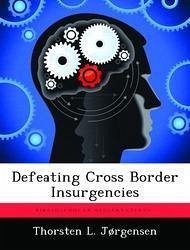History has witnessed numerous examples of cross border insurgencies where the insurgents have operated across international borders: in the 1950s in Algeria, the 1960s and 1970s in Oman, the 1980s in Afghanistan and Kosovo in the 1990s. Presently, the international community has returned yet again to Afghanistan. Using a comparative case study design, the analysis examines the insurgencies in Oman (1960s and 70s), Kashmir (1989 -) and Afghanistan (2001 - ).This thesis assesses whether COIN efforts can be successful when the insurgents are operating from safe havens in neighboring states. The Oman case study was chosen because the counterinsurgents were successful even though the insurgents had access to safe havens in neighboring Yemen. The ongoing Kashmir insurgency (since 1989 in its current incarnation) depends on heavily cross border support from Pakistan. Afghanistan is the focus of the analysis. Currently, NATO forces and non-NATO allies are engaged in fighting an insurgency which is operating out of safe havens in Pakistan's western provinces (North West Frontier Province, Federally Administered Tribal Areas and Baluchistan). The methodology applied in this thesis is a combination of the structurally focused Collier-Hoeffler model and Bard O'Neil's process oriented model on insurgencies. A variety of factors ranging from the status of the economy to cross border ethnicity are discussed in order to determine if, and how, a COIN effort can achieve success.
Hinweis: Dieser Artikel kann nur an eine deutsche Lieferadresse ausgeliefert werden.
Hinweis: Dieser Artikel kann nur an eine deutsche Lieferadresse ausgeliefert werden.








